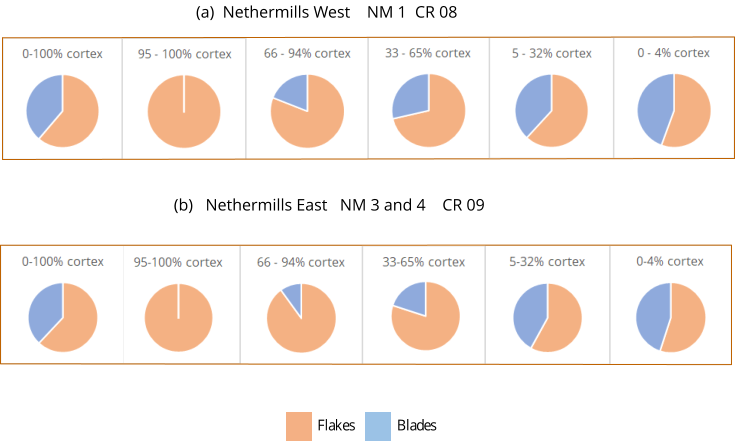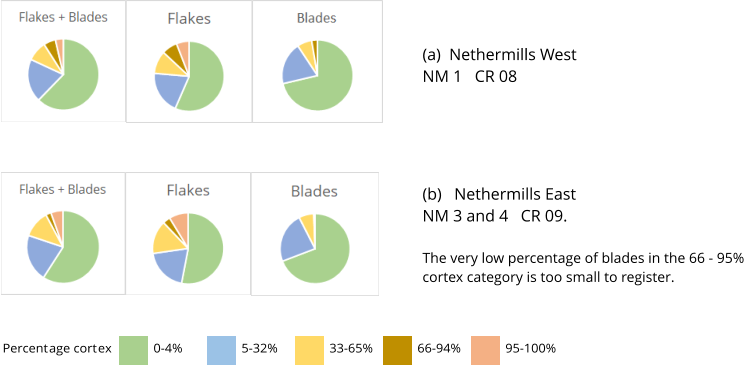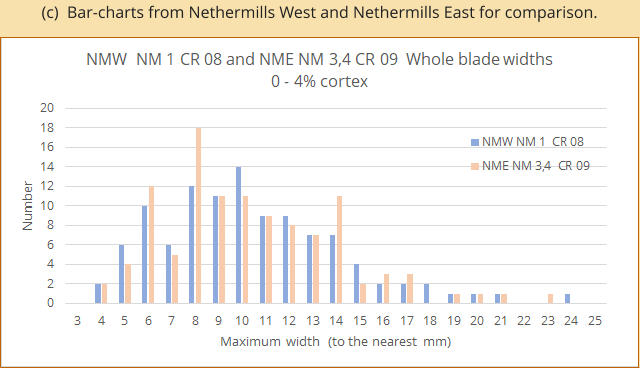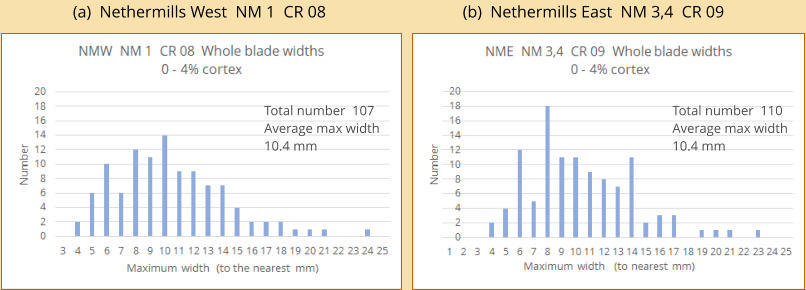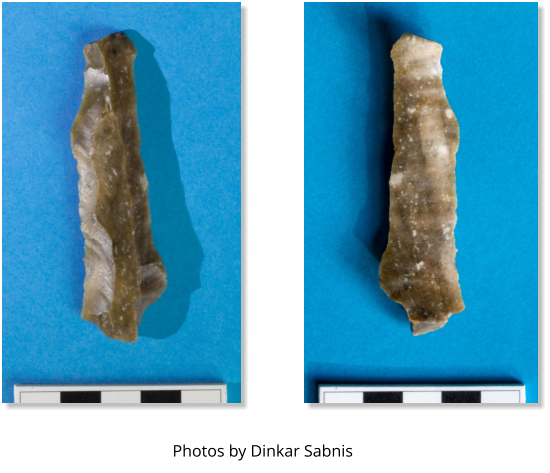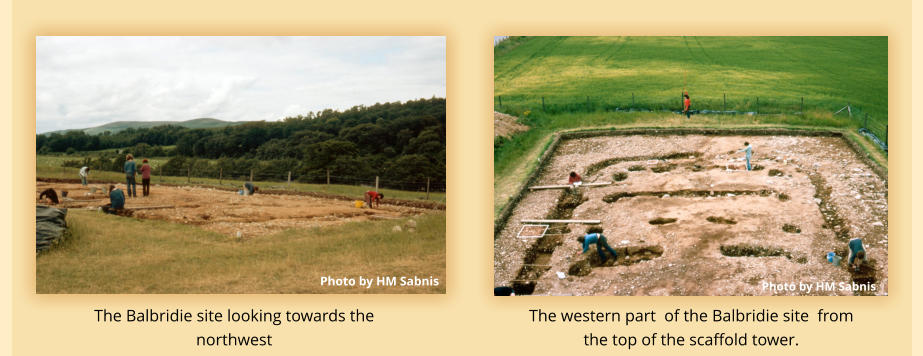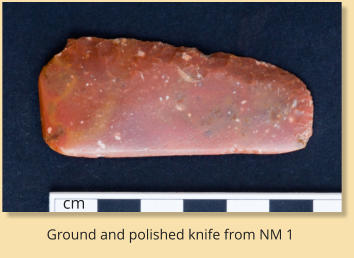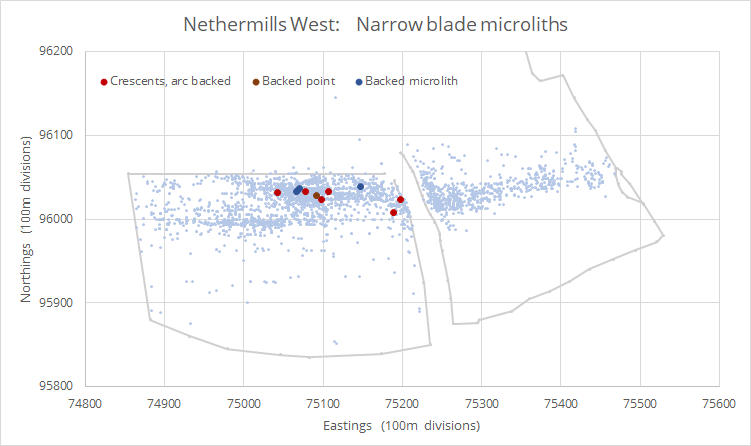LITHIC ANALYSIS
Uncovering one of the largest Mesolithic Sites in the UK
For detailed analysis select lithic type










Information recorded for all finds
Year, site, field number, grid reference, date when found and finder’s intials
Attributes recorded for all the lithics
Material: (almost exclusively flint), + notes on quality, inclusions, flaws
Colour + notes (see General Results, Colour)
Burnt: yes (cracked or crazed), slightly burnt (red tinges), or no
Cortex: yes / no, colour, chatter marks
Size: Using a graded series of circles
Weight: weighed to 0.01gm (Scout Pro up to 200gm)
Type: based on Torben Ballin
Types
Flake: a piece removed from a nodule or core with one identifiable ventral surface (including ‘
chips’, flakes smaller than 10.0mm)
Blade: flake with length equal to or twice the maximum width, parallel edges and ridges
Core: a piece with only dorsal surfaces produced by removal of three or more flakes
Split pebble: with fewer than three flakes removed
Tool/Retouched (scraper, arrowhead, microlith, microburin)
Indeterminate fragment: unidentifiable as either a flake or a core
Chunk: a larger indeterminate piece
Other attributes recorded in addition where relevant
Almost 10,000 flints were collected during this project. I used Microsoft Excel for
cataloguing, recording attributes and processing the data.
Flakes
Whole, almost whole,
Platform remnant width, depth
Platform preparation: abrasion, heavy abrasion, trimmed
Termination: feathered, hinged, plunging
Cortex, postion and percentage of dorsal surface
Ridges: number and position
Length, at right angles to platform, max width, max thickness
Fragment:
Proximal, medial, distal, proximal+medial, medial+distal, split
As above, where possible, but not measured, and cortex recorded as yes/no
Blades
Whole, almost whole
As for whole, almost whole flakes where possible
Fragments:
length equal to or twice maximum width
Probable fragments:
length more than two thirds maximum width
Possible fragments:
length less than two-thirds msaximum width
Single platform cores
Whole/almost whole
Length, at right angle to the platform
Platform width parallel to the face
Platform depth at right angle to the face
Number of removals
Type of removals (flake, blade, long flake)
Cortex amount and position
Percentage of platform edge worked
Longest face length
Reason for abandoning
Angle between platform and face
Morphology (e.g, pyramidal, cylindrical)
Damaged, broken
As for ‘whole, almost whole’ where possible
More than one platform
As for ‘other cores’ (below)
Other cores
No definite platform
Length (longest dimension)
Width (second longest dimension at right angle to length)
Thickness (third longest dimension at right angles to width)
Number of removals
Type of removals
Cortex, amount and position
Morphology
Split pebbles
As for ‘other cores’ where possible, and/or brief description

Reference for the Lithics Analysis page
Torben
Ballin
2013.
Nethermills
Farm,
Banchory,
Aberdeenshire.
The
Lithic
Assemblage.
46 pages.
Both
broad
blade
and
narrow
blade
microliths
are
present
in
this
assemblage,
including
unidentifiable
fragments
not
dealt
with
in
this
report.
Wide
based
triangles
and
oblique
points
comprise
the
broad
blade
technology,
whereas
crescents
and
edge-backed
microliths
are
the
main
representatives
of
the
narriow
blade
technology.
The
wide-based
triangles
fall
into
two
groups,
large and small.
MESOLITHIC RESULTS
Broad Blade Technology (?early Mesolithic)
Three
oblique
points
and
15
wide-based
triangles
were
found
during
the
fieldwalking
at
Crathes. All have the proximal end removed
The
dimensions
and
retouch
attributes
of
the
oblique
points,
two
from
NMW
and
one
from
NME, agree very well with those from the JBK excavation (See tables and graph).
Figure M1 shows the dimensions of the wide based triangles from all 3 sites (a) and (b) oblique points from
NME and NMW.
Preference
for
retouch
along
the
right
edge,
and
the
medial
(probably
extending
distally)
section
of
the
blade
being
used
are
in
line
with
those
from
the
JBK
material.
One
of
the
large
ones
had
the
remains
of
a notch from the microburin technique.
However,
when
comparing
the
two
samples
with
those
from
the
JBK
dig,
the
average
dimensions
of
the
two
groups
from
each
sample
differ:
the
OFARS
‘large’
are
larger,
the
JBK
‘small’
are
smaller;
the
JBK ‘large’ are nearer in length to the OFARS ‘small’ (see Fig. M2 (a).
The
average
length/width
ratios
of
the
two
sets
of
small
and
large
triangles
seem
to
be
similar
(Figure
M2 (b).
Figure M2 shows the average dimensions of the OFARS (HS) and the JBK
dig (JK/TB) triangles (a), and (b) the linear regression at SE 95%.
Alan
Saville
(pers
comm)
suggested
that
the
small
triangle
from
MC
was
an
intermediate
form.
Does
this
represent
a
continuum
of
sizes
in
contemporaneous
use,
or
an
indication
of
progress
from
the
broad
blade
industry
to
the
narrow
blade
over
the
years?
JBK
was
of
the
opinion
that
the
OFARS
oblique
points
were
on
the
small
side
and
referred
to
them
as
reminiscent
of
the
Early
Mesolithic rather than definitely diagnostic (DES ref).
Narrow blade technology (?Later Mesolithic)
Narrow
blade
microliths
were
found
at
all
three
sites
(Table
M3);
almost
all
are
either
crescents,
edged
‘with
a
highly
regular’
convex
curvature
(see
TB)
or
edge-backed
microliths
with
straight
edges,
backed
on
one
side,
with
the
proximal
end
removed.
A
couple
of
‘crescents’,
not
included,
were backed on the chord with the curvature on the blade edge.
The
average
dimensions
of
the
crescents,
are
in
very
close
agreement
with
the
JBK
crescents,
but
the
range
in
lengths,
is
slightly
less,
maybe
a
result
of
a
smaller
sample.
The
edge-backed
microliths
are
almost as close, average (slightly smaller) and lengths again have a slightly smaller range.
In
view
of
the
small
sample,
and
the
pieces
with
indeterminate
retouch,
the
left/right
retouch
ratios
of
the OFARS narrow blade microliths are not too dissimilar to the JBK material.
Microliths
are
small
lithic
implements
manufactured
to
form
composite
tools,
either
as
tips
or
as
edges/barbs,
and
which
conform
to
a
restricted
number
of
well-known
forms,
which
have
had
their
(usually)
proximal
ends
removed
Clark
1934,
55).
This
definition
secures
the
microlith
as
a
diagnostic
(pre
Neolithic)
type.
Below,
microliths
sensu
stricto
(ie,
pieces
which
have
had
their
usually
proximal
ends
removed)
and
backed
and
truncated
microblades
(with
surviving
proximal
ends)
are
treated
as
a
group
as
these
types
are
thought
to
have
the
same
general
function.’
Torben
Ballin
2012
Nethermills
Farm, Aberdeenshire. The Lithic Assemblage
Figure M3 shows the dimensions of all narrowblade microliths from MC, NMW and
NME (a) edge- and backed and (b) crescents.
Other microliths
A
long
narrow
blade
‘point’
backed
along
all
the
right
edge
17.0
x
5.3
x
1.3
was
picked
up
from
NME.
Another,
21.0
x
6.2
x
2.0
collected
from
NMW
with
left
retouch
seemed
to
be
intermediate
between
a
broad
blade
oblique
point
and
the
long
narrow
blade
point.
The
medial/distal
section
of
the
blade
was
used for both.
Table M1: Number of microliths found at each site
Technology
Type
MC
NMW
NME
Broad Blade
Wide based triangles, large
1
3
8
Wide based triangles, small
1
2
0
Oblique Points
0
2
1
Narrow Blade
Crescents
1
6
8
Edge-backed microliths
1
4
9
Table M2: Main attributes of all wide based triangles and oblique points
Type
Total
Number
Average
Length
(mm)
Average
Width
(mm)
Average
Thickness
(mm)
Range of
lengths
(mm)
Left
Retouch
Right
Retouch
Large wide-based triangles
11
26.8
10.4
2.8
22.6 - 35.5
3
7(?+1)
Small wide-based triangles
3
17.3
7.6
2.2
16.7 - 18.0
0
3
Oblique Points
3
18.4
8.4
2.0
17.2 - 20.1
1
2
Table M3: Main attributes and the length range of all the edge-backed microliths and the crescents
Type
Average
Length
(mm)
Average
Width
(mm)
Average
Thickness
(mm)
Range (lengths)
(mm)
Left
Retouch
Right
Retouch
Indeterminate
Retouch
Edge-backed microliths
15.4
4.1
1.7
11.5 - 19.8
1
6 (?8)
5
Crescents
17.8
4.7
2.1
11.9 - 22.3
6
7 (?8)
2
Location of microliths
To
show
where
each
type
of
microlith
was
found
in
relation
to
the
extent
and
intensity
of
the
flint
scatters,
their
grid
references
have
been
superimposed
on
those
of
the
relevant
scatterplot
(pale
blue).
For
MC
and
NM
2,
two
scatterplots,
each
covering
slightly
different
areas,
were
combined
to
give
a
fuller overall impression.
Scatterplots used for each site:
Milton Cottage: CR 08 + CR 11
Nethermills West: NM 1 CR 08, NM 2 CR 10 + CR 11
Nethermills East: CR 09
‘
Some diagnostic microliths from the Mesolithic
Two straight edge-backed microliths
(left) and two crescents (right)
Wide based triangles
Some are more iscoceles than others!
Oblique points
Broad blade
Narrow blade
Average lengths
Large
Small
HS
27.3 mm 17.3mm
JK/TB
20.3 mm
8.5mm
The crescents tend to be more variable in length and width than the edge-backed microliths.
Microburins will be added later
![Close [x]](index_htm_files/close.png)
CORES
Most
of
the
platform
cores
have
one
platform,
usually
flat
and
produced
by
removal
of
a
large
flake
from
one
end
of
the
pebble,
but
several
have
two
platforms
often
at
90
o
to
each
other,
very
few opposing.
Platform cores
Number of platform core types from each of the three Crathes sites
Cores / Site
MC
NMW
NME
Total number of platform cores
26
92
98
Single platform
23
80
86
Two platforms
1
9
11
? More than two platforms
2
3
1
Cores were found throughout all three sites. The majority were platform cores,
with flakes/blades having been struck from the edge of a prepared surface.
Only
single
platform
cores
with
relevant
measureable
attributes
will
be
considered
in
detail
in
this
report.
Numbers of platform cores from the three sites in relation to
burning and colour
Attribute / Site
MC
NMW
NME
Total number of platform cores
26
92
98
Unburnt
22
76
79
Slightly burnt
2
2
9
Burnt
2
12
10
Brown
5
52
61
Grey
16
19
14
Red
1
5
3
Black
0
0
1
% Brown
22.3
68.4
77.2
% Grey
72.7
25.0
17.7
The
two
scatterplots
below
show
the
distribution
of
platform
cores
over
the
Nethermills
East
site
(NM 3 and NM 4): Upper: all platform cores, Lower: Single platform cores
Burnt cores were found at all three sites.
The
colours
of
the
cores
to
some
extent
do
reflect
those
at
each
site,
with
brown
dominant
at
NMW
and
NME,
and
grey
at
MC.
However
the
percentage
ratio
of
grey
to
brown
at
MC
is
much
higher than that of the whole assemblage.
(This page is still in preparation)
![Close [x]](index_htm_files/close.png)
FLAKES AND BLADES
Flakes
and
blades
comprise
the
main
part
of
this
collection of flints from Crathes, but most are broken.
The pie-charts below are based on the above tables.
Figures
FB1(a)
and
FB1(b)
represent
columns
2
-
7
to
show
the
ratio
of
flakes
to
blades
at
each
cortex percentage at the two sites.
Table FB2: Nethermills East NM 3 and 4 CR 09
Percentage
cortex
Flakes + Blades
Flakes
Blades
Percentage
blades
0 - 100 (i.e. all)
424
264
160
37.7
95 - 100
23
23
0
0.0
66 - 94
10
9
1
10.0
33 - 65
51
40
11
21.6
5 - 32
89
51
38
42.7
0 - 4
250
140
110
44.0
Table FB1: Nethermills West NM 1 CR 08
Percentage
cortex
Flakes + Blades
Flakes
Blades
Percentage
blades
0 - 100
390
240
150
38.8
95 - 100
14
14
0
0.0
66 - 94
21
17
4
19.0
33 - 65
35
25
10
28.6
5 - 32
76
47
29
38.2
0 - 4
241
134
107
44.4
Flakes and blades: percentage cortex
The
amount
of
cortex
varies
from
0-100%,
and
pieces
were
assigned
to
to
different
divisions
according
to
the
percentage
present.
There
were
extremely
few
with
a
very
small
amount,
and
the
0
-
4%
seemed
a
more
appropriate
place
for
them
than
in
the
5
-
32%.
Tables
FB1
and
FB2
give
the
number of flakes and blades, and blade percentages in each cortex category at the two sites .
One flake w
ith indeterminate cortex/flaw
was included only in the 0 - 100% category
Three flakes did not have the cortex recorded, and have been included only in the 0 - 100% cortex category.
Flakes
were
catalogued
as
‘whole’,
‘almost
whole‘
(ie
with
fairly
minimal
damage),
or
fragments.
Fragments
were
further
described
as
proximal
(p),
medial
(m)
distal
(d),
proximal+medial
(pm)
or
medial+distal (md).
Blades were categorised in the same way, but blade-like fragments were identified as follows:
blade fragment: length >/= 2 x width
probable blade fragment: length >/= 1.5 x width
possible blade fragment: length >/= 1 x width
Only ‘whole‘ blades and flakes have been considered in the data below.
Data
below
compare
the
two
major
Crathes
sites.
Nethermills
West
(NMW)
NM1
and
Nethermills
East
(NME),
NM
3
and
4,
but
information
from
NM
2
(the
eastern
end
of
NMW
has
not yet been included.
Figure FB2 (a) and (b) represent columns 3 - 4 to show the relative numbers of flakes and blades within
the different categories of cortex percentages at the two sites.
Figure
FB3
(a)
and
(b):
graphs
showing
the
length/maximum
width
of
all
whole
blades
and
flakes indicating the variations in size at the two sites.
Flakes and blades: Length / Maximum width
All
in
all
the
relationship
between
numbers
of
flakes
and
blades
with
cortex
percentages
are
very
similar at Nethermills West and Nethermills East.
Figure FB4 (a), (b) and (c): bar-charts showing the number of blades at each maximum width.
Both
sites
show
more
or
less
the
same
variation
in
length/maximum
width
of
flakes
and
blades,
but
seem
to
be
more
clustered
around
the
flake/blade
dividing
line
(lengths
10
-
30
mm)
at
Nethermills
West.
Blades
Flakes
Blades
Flakes
Blades: variation in maximum width, 0 - 4% cortex
At
both
sites,
blades
with
0
-
4%
cortex
have
an
average
maximum
width
of
10.4
mm
and
a
dip
in
numbers at 7 mm; fairly similar overall, but with some differences at 8, 10 and 14 mm.
![Close [x]](index_htm_files/close.png)
(This page is in preparation)
![Close [x]](index_htm_files/close.png)
Balbridie A large Early Neolithic timber hall
South of the River Dee near the B9077 and about 2 km west of the A957.
Excavation directed by Ian Ralston and Nicholas Reynolds 1977-80
I enjoyed working as a volunteer on this excavation too.
Ian Ralston and Nicholas Reynolds, Interim Report 1981: Balbridie, Excavations 1977 - 80.
Excavations at Balbridie Farm, Kincardine and Deeside District (NO 733959)
EARLY BRONZE AGE
This barbed and tanged arrowhead from Nethermills
West, was found by D D Sabnis Jr in 1980. Another
one from the Milton Cottage field shows activity
continuing into the Early Bronze Age.
NEOLITHIC ACTIVITY NEARBY
Left
A
quick
rough
sketch
to
give
an
indication
of
the
direction
of
the
flake
scars.
The
one
on
the
right
is
opposed,
and
the
two
on
the
left
aren’t
exactly
in
the
same
direction as each other.
Right
Crathes,
Nethermills
East
(NM
3
and
4).
Graph
showing
length/width
of
whole
and
almost
whole
blades
with
0-4%
cortex
and
feathered
terminations.
The
possible
LUP
blade
has
been
added for comparison
This
possible
LUP
blade
was
broken
at
the
proximal
end
(no
bulb
of
percussion
present),
and
with
a
partial
hinge
termination/stepped
or
broken.
It
is
also
broken
at
the
right
proximal
edge,
so
may
originally
have
been
wider
here.
It
does taper from proximal to distal end.
One
of
the
three
flake
scars
is
opposed
–
from
a
core with opposing platforms?
Length:
77.2 mm
Max width
20.6 mm
Max thickness
5.5 mm
NON-MESOLITHIC
Possible Late Upper Paleolithic (LUP)
The
above
find,
noticed
when
this
collection
was
returned
to
us
about
three
years
ago,
was
an
unusually
long,
large flint blade when compared with other blades from the Crathes site.
After
reading
that
LUP
blades
were
very
long,
and
cores
often
had
opposing
platforms
(T
Ballin
and
C
Wickham-Jones
2017),
I
emailed
photos
and
details
to
Caroline
as
she
had
seen
this
blade
earlier
at
‘Mesolithic
Deeside
Day’
and
had
suggested
it
might
be
LUP.
She
forwarded
my
email
to
Torben
Ballin,
and
the reply came back that it was ‘
definitely a possible Late Upper Palaeolithic blade’.
A find from the Sabnis Children’s Collection 1978-1980
Reference
T
Ballin
and
C
Wickham-Jones,
Searching
for
the
Scottish
Late
Upper
Palaeolithic:
A
case
study
from
Nethermills
Farm,
Aberdeenshire.
Journal
of
Lithic
Studies.
Published
by
the
School
of
History,
Classics
and
Archaeology, University of Edinburgh (2017) vol. 4.
NEOLITHIC
Several pieces diagnostic of the Neolithic were picked up during the OFARS fieldwalking at Crathes
Warrenfield A second large Early Neolithic timber hall, and a Mesolithic pit alignment with later use
in the Neolithic
Near Crathes Castle, about 2 km northwest of Nethermills
Excavation directed by Hilary and Charles Murray 2004-6
Hilary K Murray, Charles Murray and Shannon M Fraser, 2009 , A Tale of the Unknown Unknowns: A
Mesolithic pit alignment and a Neolithic timber hall at Warrenfield, Crathes, Aberdeenshire.
Early days during the excavation
at the Warrenfield site
After having worked on the Balbridie excavation, I was very pleased to join the Warrenfield dig as well.
![Close [x]](index_htm_files/close.png)
NM 2
NM 1
NM 1A
NM 2
NM 1
NM 1A
NM 2
NM 1
NM 1A
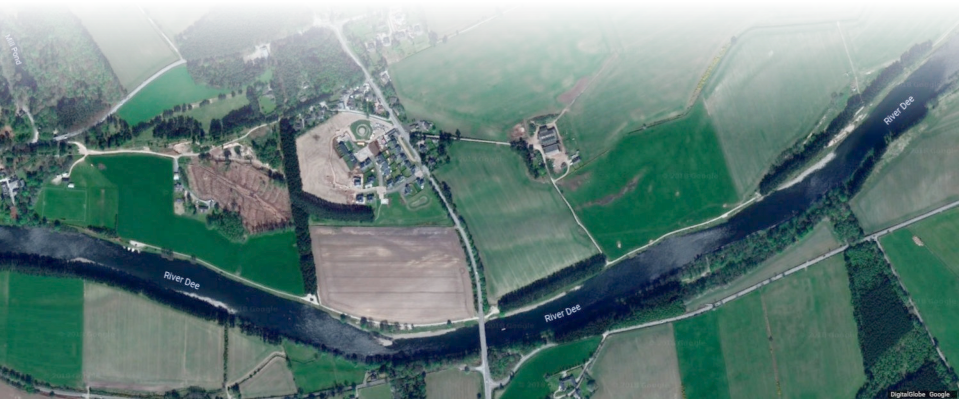











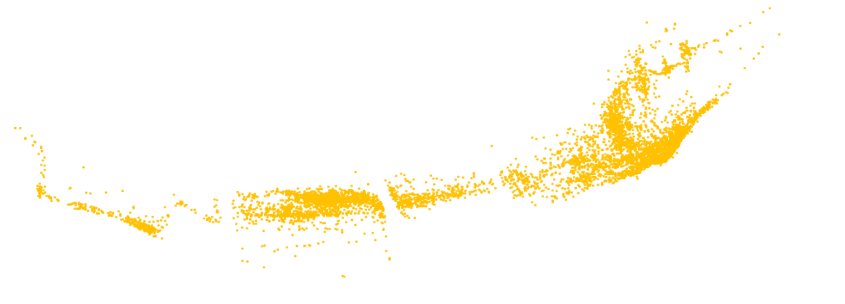















































































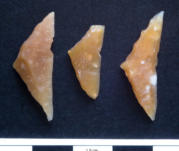


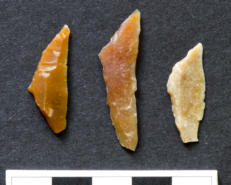
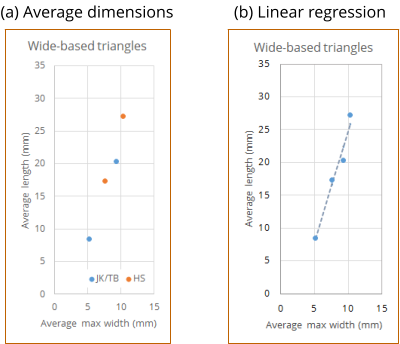
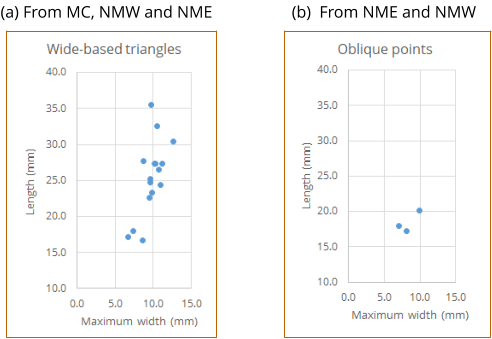

![Close [x]](index_htm_files/close.png)























































